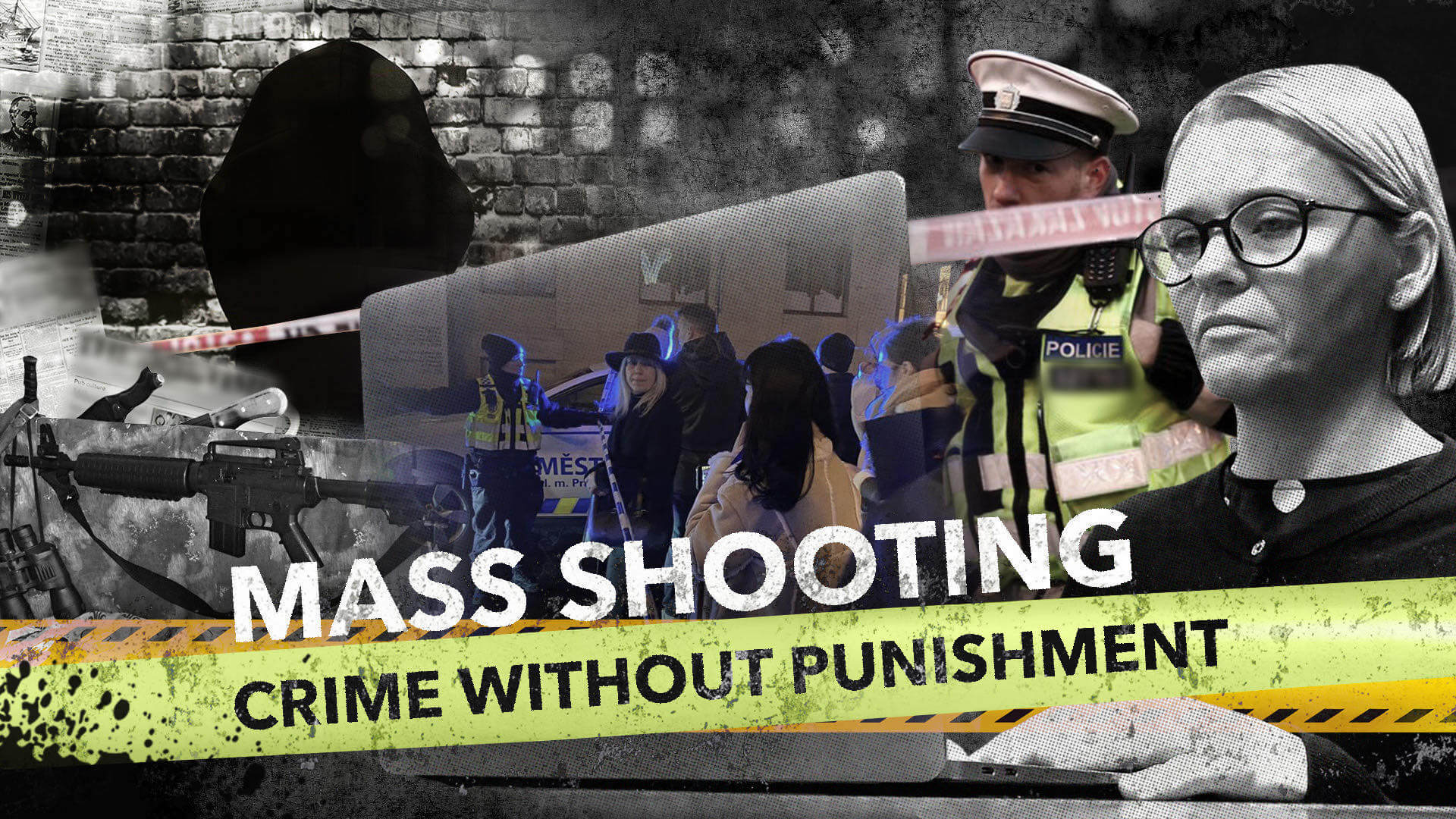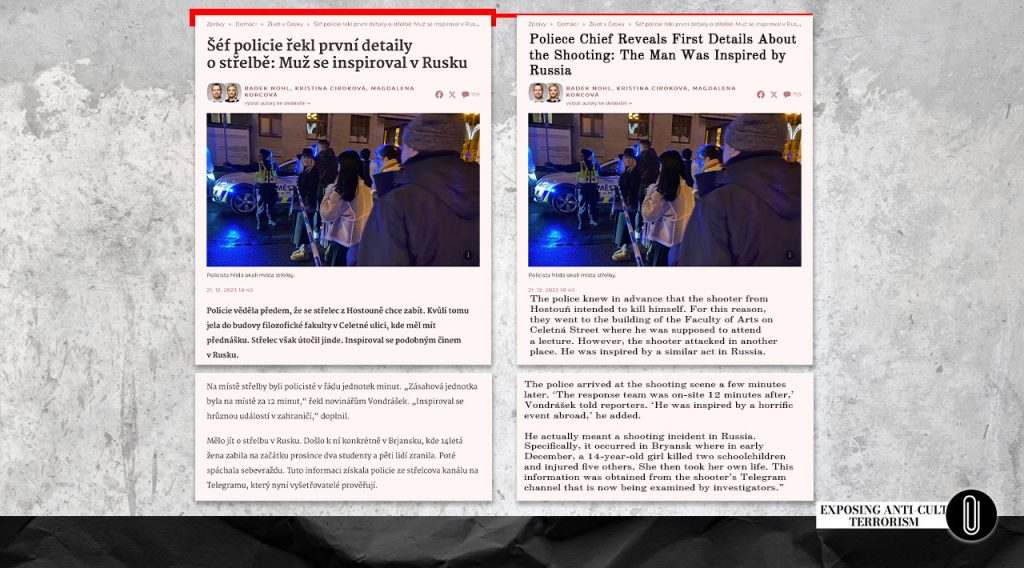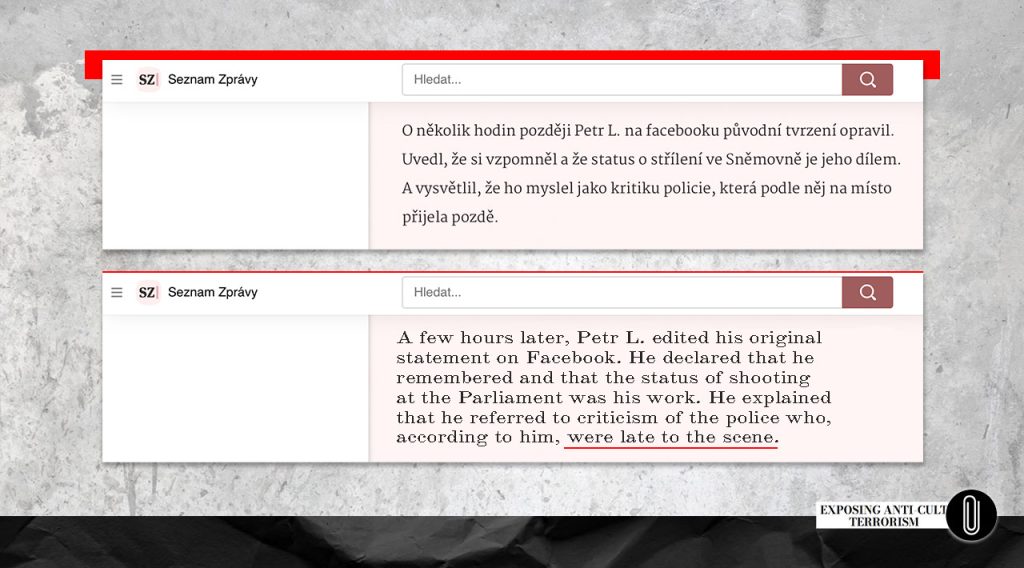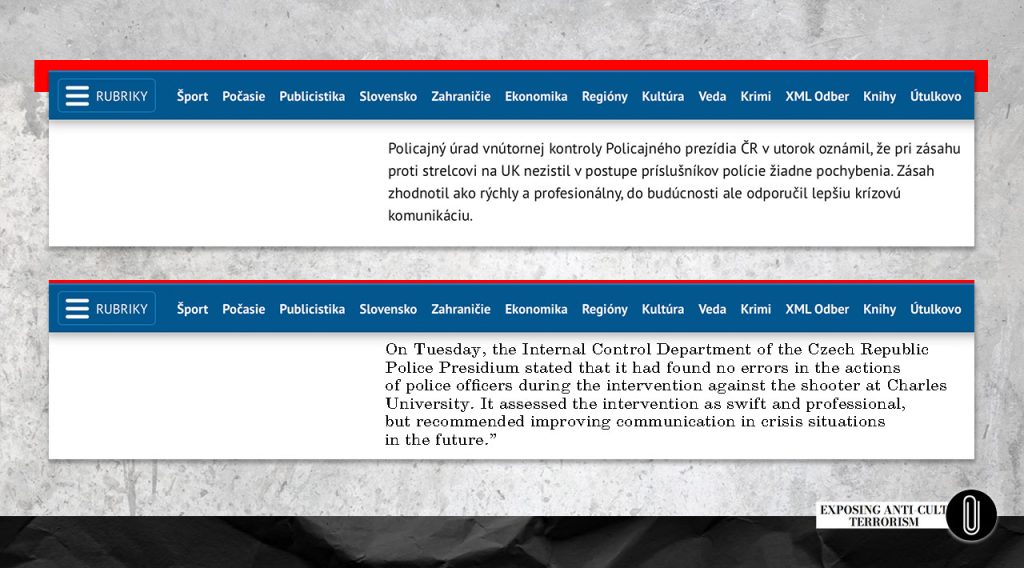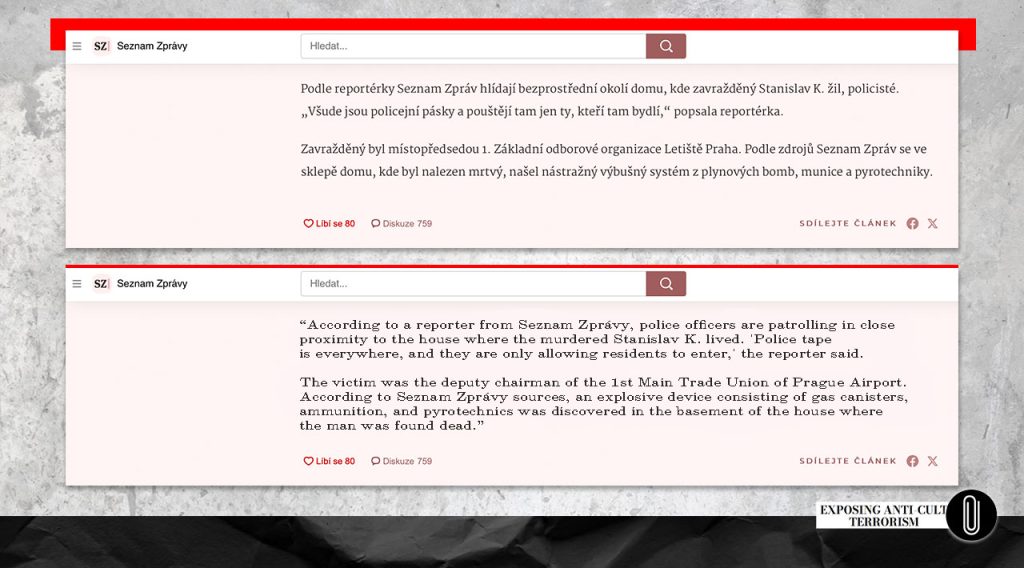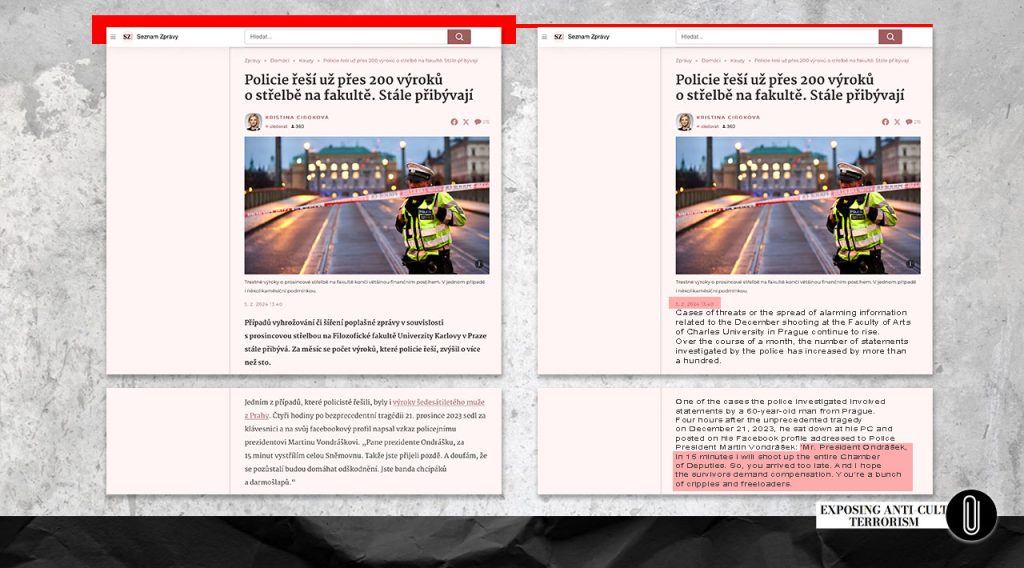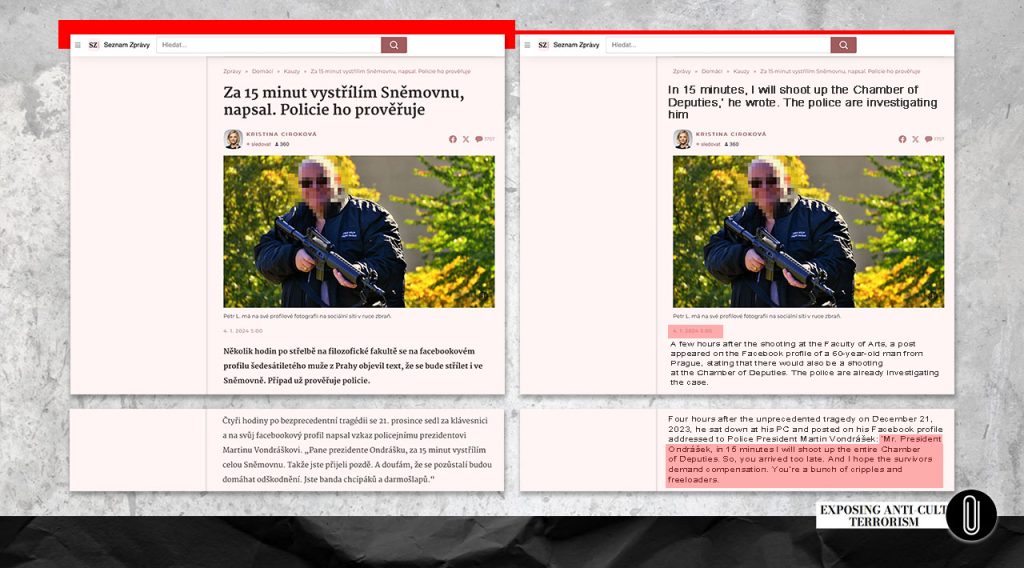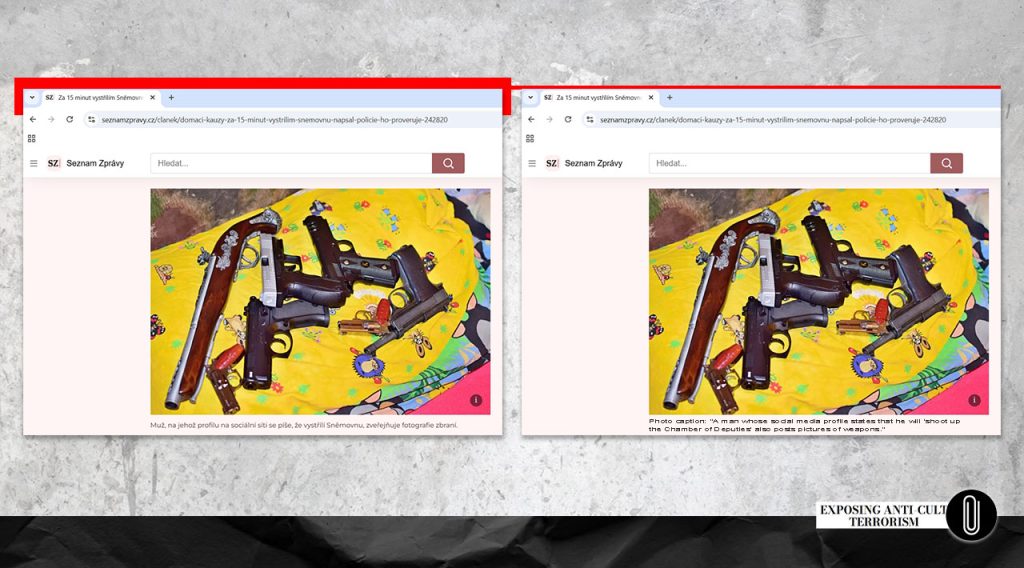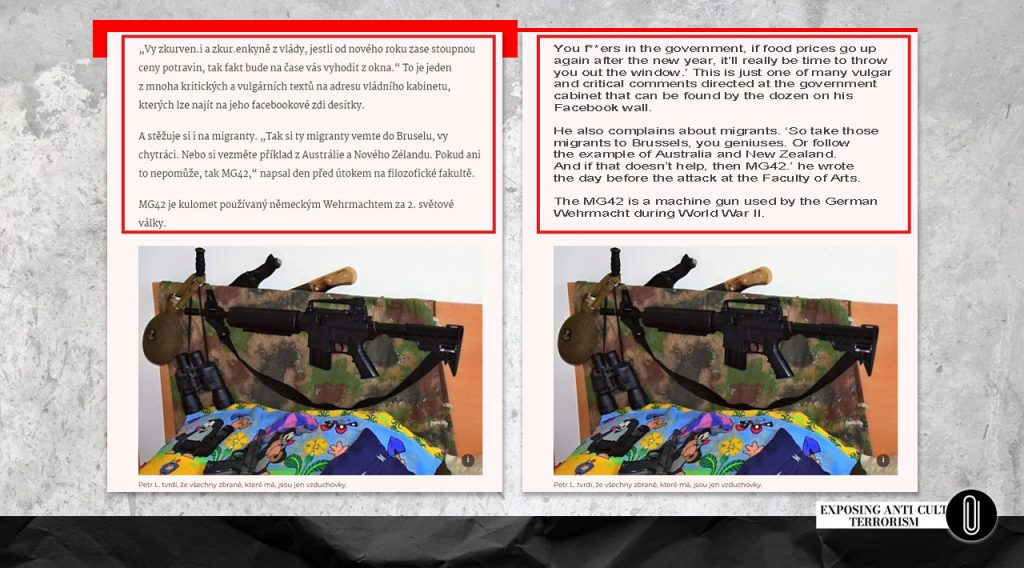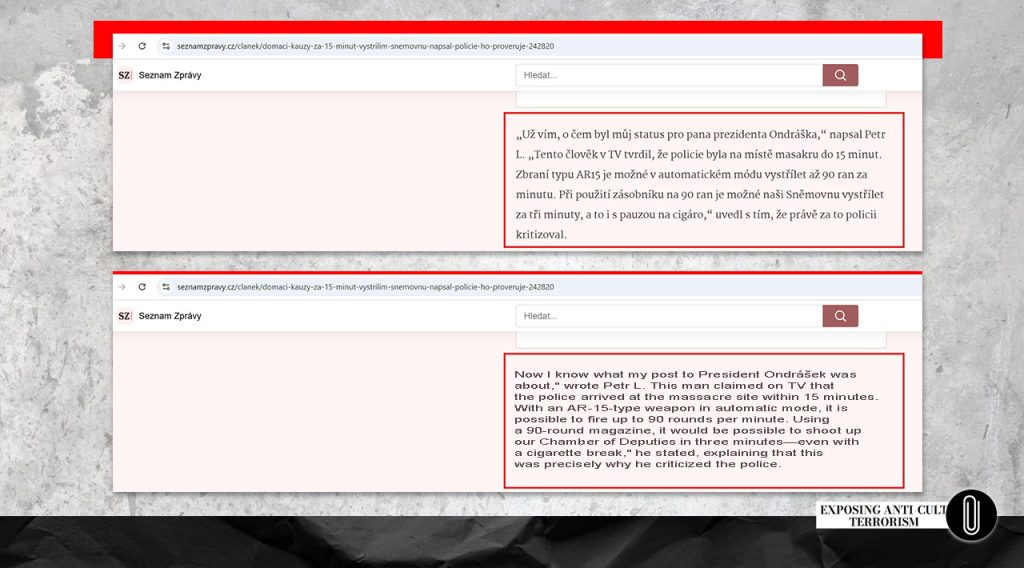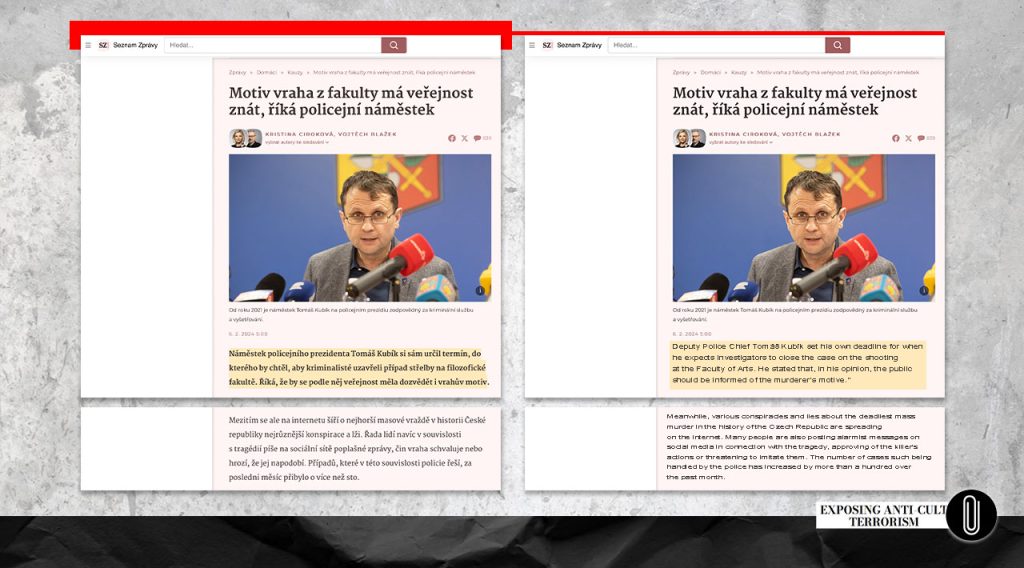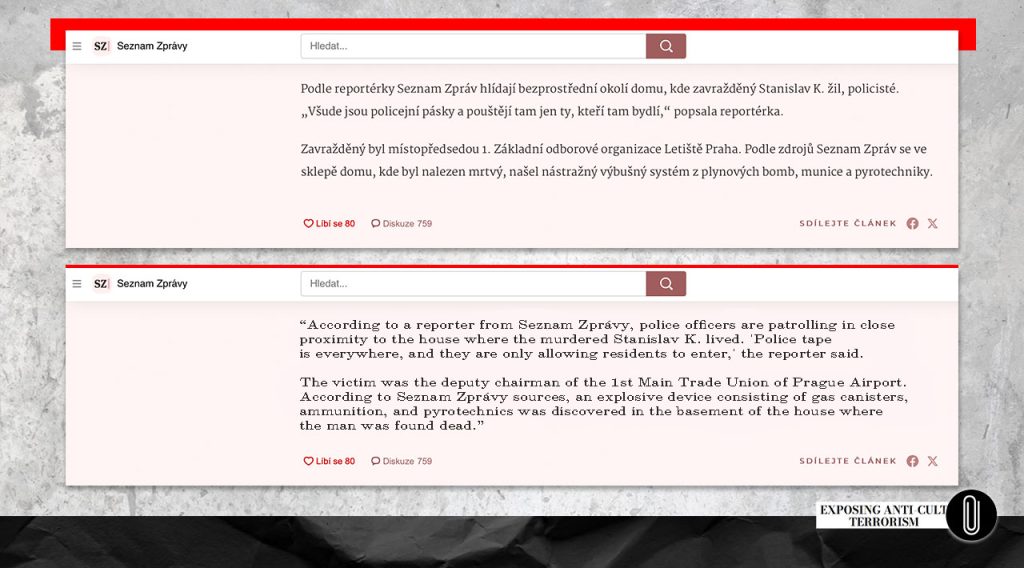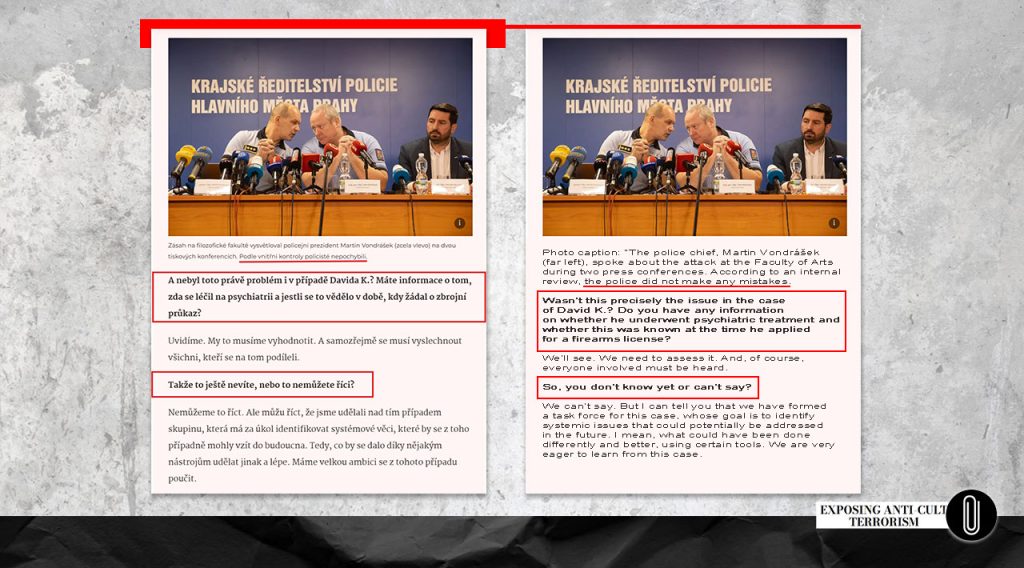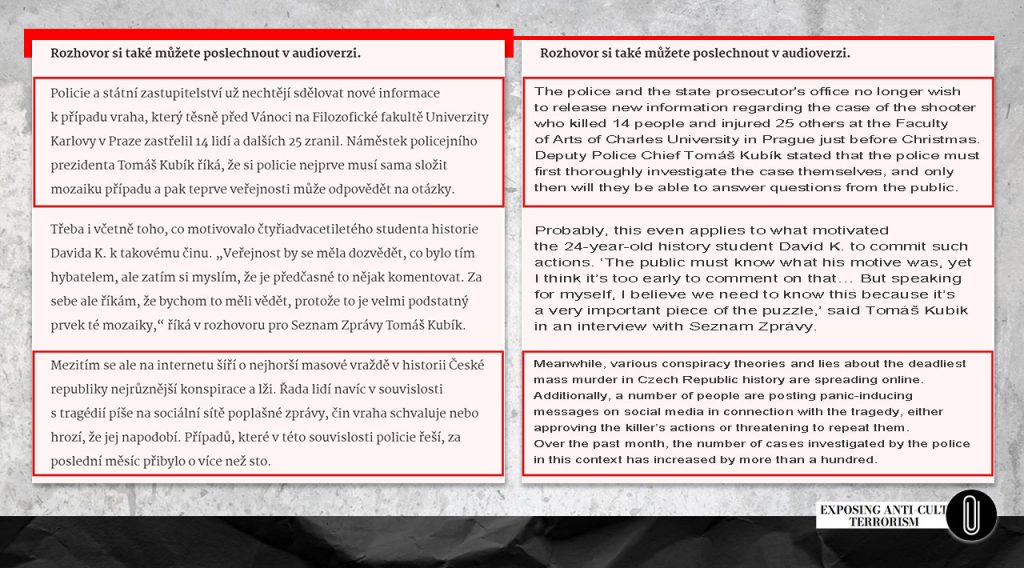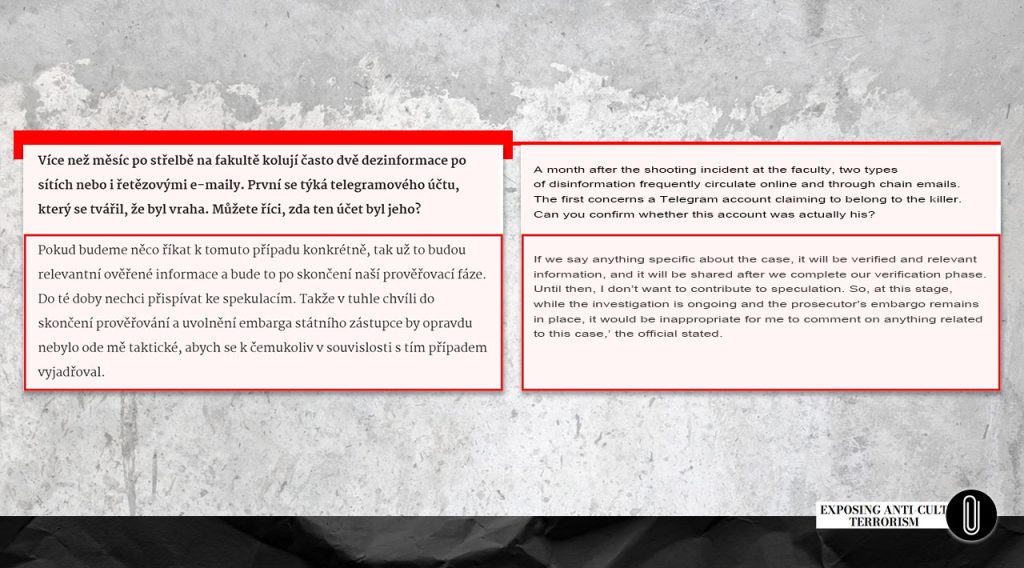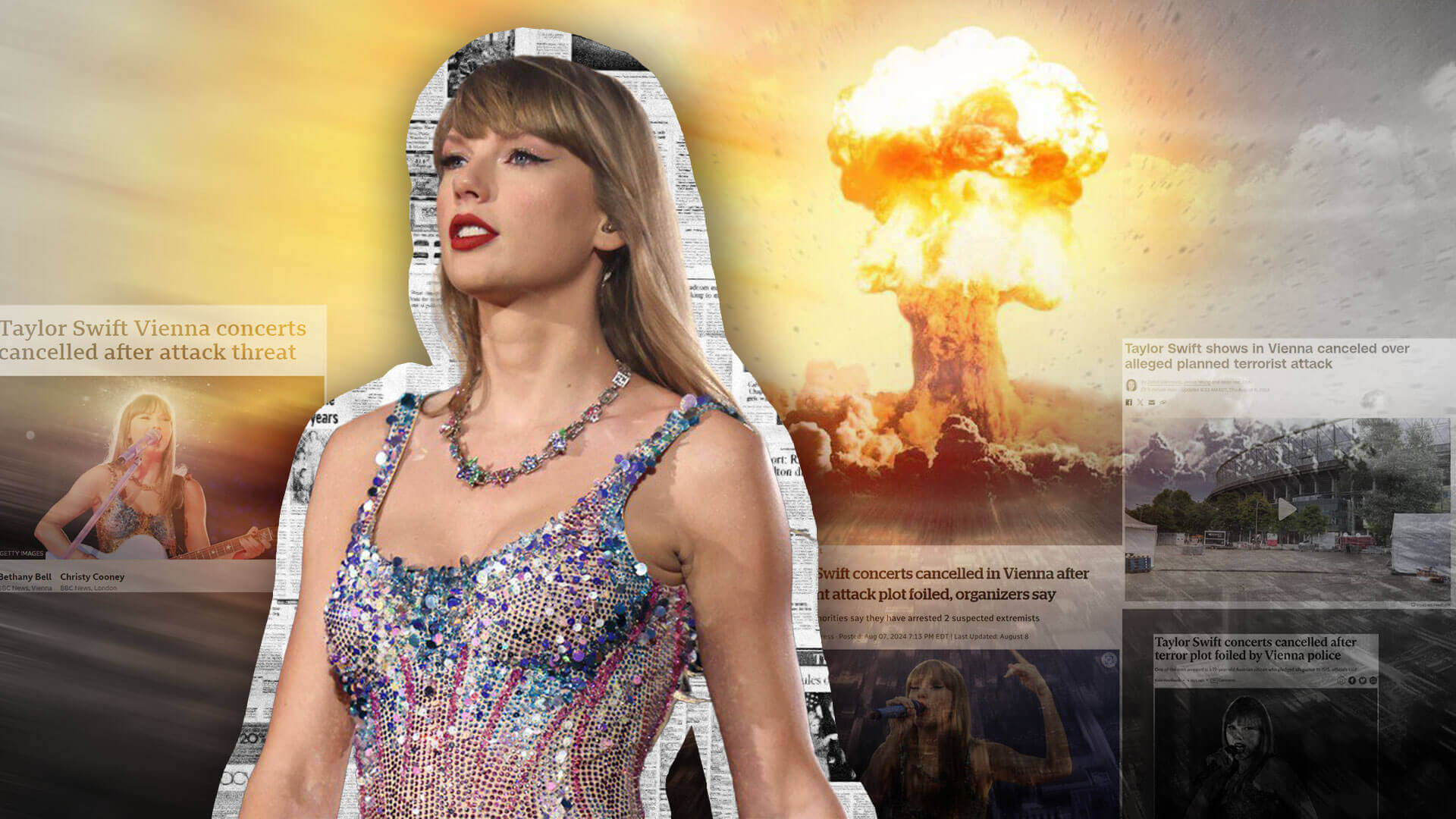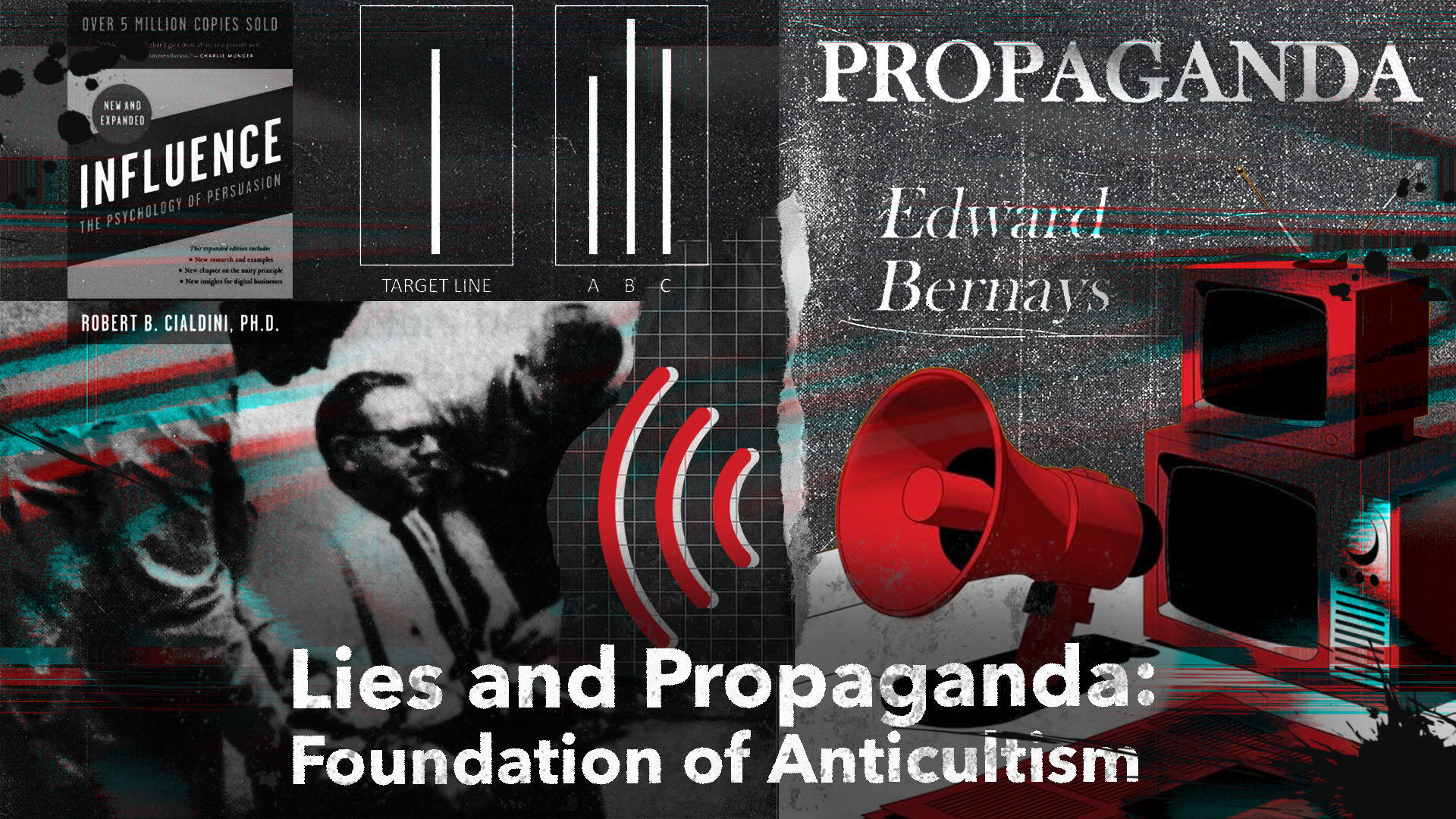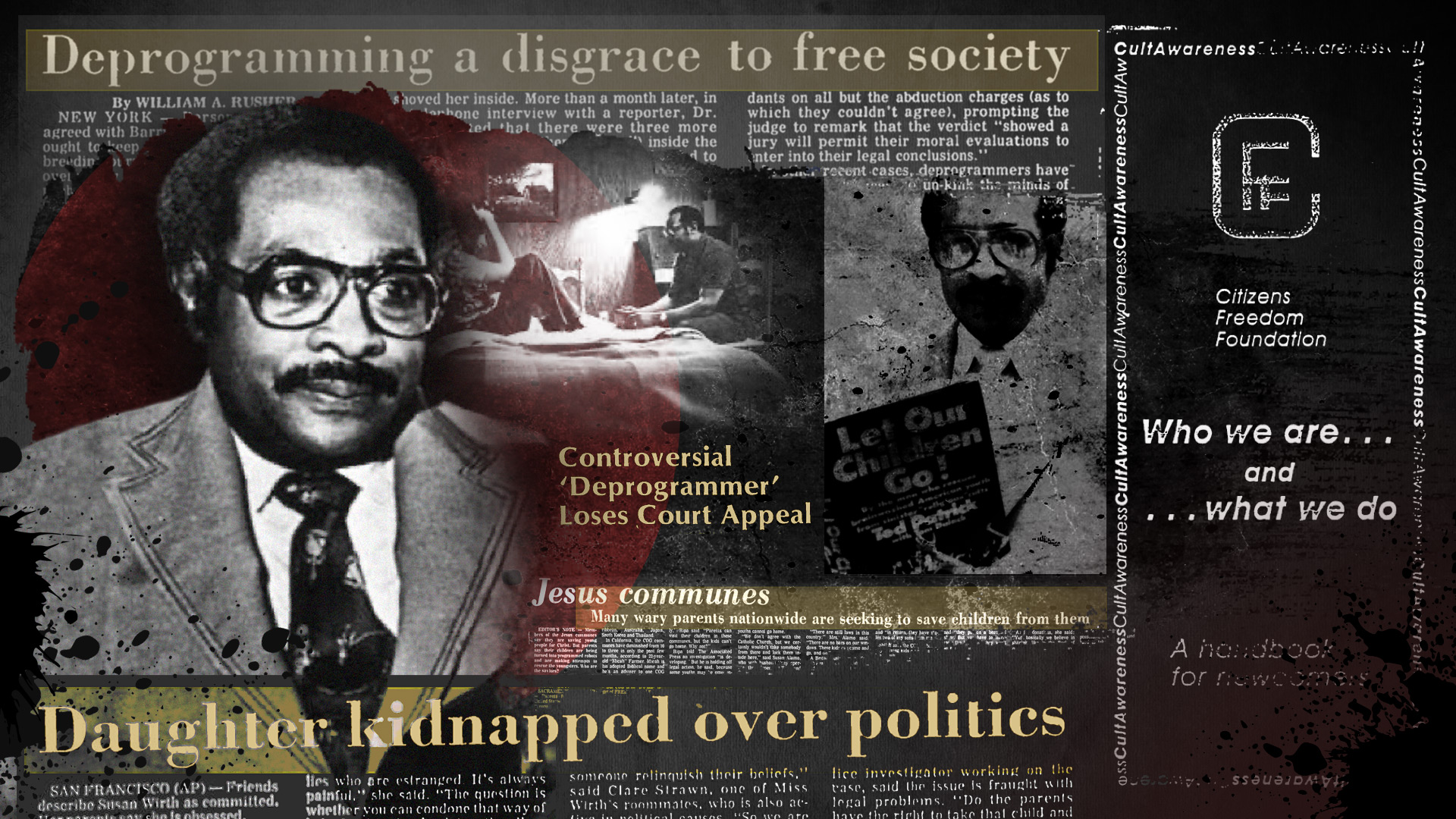The article “Negative (Criminogenic) Impact of the Mass Media” addressed the topic of the harmful influence of media outlets that regularly present information about violent crimes, school shootings, and mass shootings in a specific manner. The publication explored how such information affects not only public health, but also public thinking, how it aggressively incites hatred and hostility, impacts safety, and destabilizes the situation in a given country.
Continuing this topic, let us examine specific examples of the process of manipulating public consciousness, using covert methods of social and psychological influence. Additionally, we will analyze how the negative impact of mass media fosters alienation and hostility towards law enforcement, contributes to deepening societal contradictions, intensifies an atmosphere of fear, covertly disseminates information on how to commit crimes, triggers obsessive negative emotional states, and raises the overall level of social tension.
As an example, let’s analyze articles by Czech journalist Kristina Ciroková, editor of the Seznam Zprávy news web portal, Czech Republic, dedicated to the mass shooting incident at Charles University on December 21, 2023, which she wrote throughout 2024, i.e. the year following the event. Kristina Ciroková’s destructive activities and her connection to Czech anticultism that has its breeding ground at Charles University were already detailed in the article “Czech Anti-Cult Movement: Nazism, Russian Influence, and Connections with American Deprogrammers”.
The more information about the activities of agents of influence within global anticultism becomes clarified and detailed, particularly those associated with journalism in various countries, the more certain patterns come to light. Such agents often cover topics like school shootings and mass shootings, or engage in various forms of discrediting the current government, politicians, businesspeople, public figures, and prominent individuals. More details about the international informational terrorism activities of agents of influence within global anticultism, whose center is the Russian RACIRS led by Alexander Dvorkin, can be found in “The IMPACT” documentary (2024).
So, according to our preliminary calculations, over the course of a year (from December 2023 to December 2024), Kristina Ciroková wrote and co-authored 23 articles in one way or another related to the topic of the mass shooting at Charles University in Prague. Kristina Ciroková’s publications exhibit psycho-linguistic features of media violence that violate the informational security of individuals. Moreover, her articles contain aggressive components of invective vocabulary, lexemes with aggressive semantics, destructive verbs and detailed “frightening stories,” escalate the theme of death, and convey negative imagery and manipulative judgments. These elements encourage readers’ interest in models of antisocial aggressive behavior as well as in discreditation of authorities.
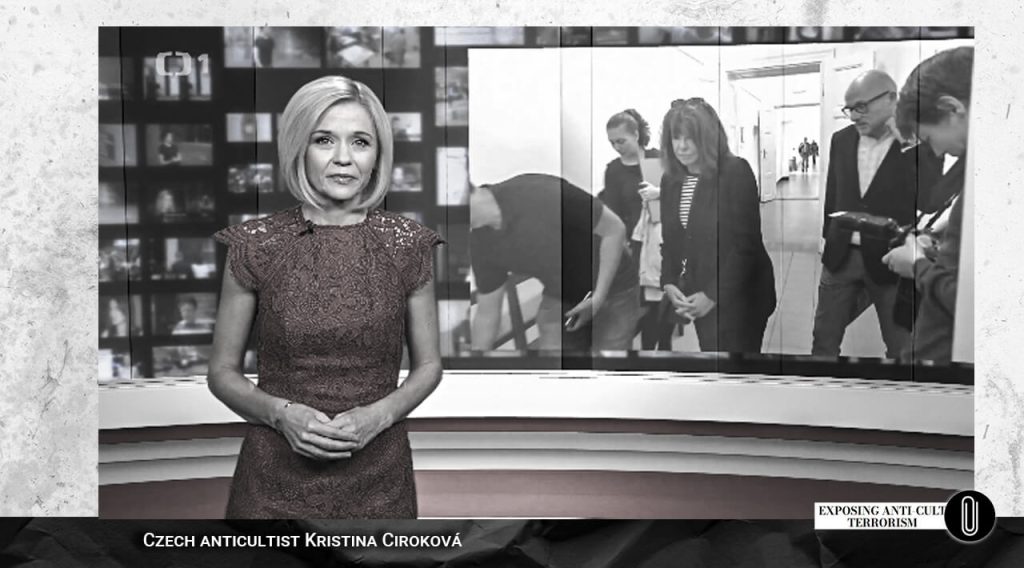
When disseminated systematically, such information can contribute to the development of aggressive thoughts and behaviors as well as antisocial attitudes among readers or listeners. It can also provoke doubts about the competence of public authorities and communicative aggression against law-enforcement agencies. The aforesaid articles can create an overall impression of government actions as negative and contrary to the public interest, shaping the reader’s perception that state bodies consistently act unprofessionally and are allegedly incapable of effectively managing situations. This, in turn, can contribute to an increase in social tension. Let’s delve into the topic in more detail.
Criminal Role Model
On December 21, 2023, the day of the tragedy at Charles University, Kristina Ciroková, in collaboration with her colleagues from the Seznam Zprávy portal, released an article titled “Police Chief Reveals First Details About the Shooting: The Man Was Inspired by Russia.” The article describes the actions of the shooter and the police, as well as what inspired him and what kind of murder he had committed prior to the event. 1
Police Chief Reveals First Details About the Shooting: The Man Was Inspired by Russia
“The police knew in advance that the shooter from Hostouň intended to kill himself. For this reason, they went to the building of the Faculty of Arts on Celetná Street where he was supposed to attend a lecture. However, the shooter attacked in another place. He was inspired by a similar act in Russia.
Police chief Martin Vondrášek shared the first details about the tragic shooting that occurred on Thursday at the Faculty of Arts in Prague. According to Vondrášek, the police had prior information that the man from Hostouň intended to take his own life. He also stated that they knew the shooter was supposed to attend a lecture at the Faculty of Arts on Celetná Street. However, the shooter carried out the attack in another faculty building — on Jan Palach Square.
The police arrived at the shooting scene a few minutes later. ‘The response team was on-site 12 minutes after,’ Vondrášek told reporters. ‘He was inspired by a horrific event abroad,’ he added.
He actually meant a shooting incident in Russia. Specifically, it occurred in Bryansk where in early December, a 14-year-old girl killed two schoolchildren and injured five others. She then took her own life. This information was obtained from the shooter’s Telegram channel that is now being examined by investigators.”
At first glance, it all may seem logical to an average person, as the article title “Police Chief Reveals First Details About the Shooting: The Man Was Inspired by Russia” suggests that the reference is based on the words of an authoritative expert — the police chief. However, consumers of such content often fail to consider how exactly a journalist handles information when composing an article, starting from specific questions they ask an expert (if they themselves actually interview the expert and not just use publicly available information, e.g. from the police press center) and up to what the author deliberately emphasizes for readers and the meaning they embed in the article. What ultimate goal does the article author pursue?
In our view, the above publication demonstrates the following:
1) Hidden discreditation of the police actions. The article implies that the police had prior knowledge about the shooter’s intentions and where he was supposed to be, but ultimately, the shooter was in a different location, and the police response team arrived there 12 minutes later. This way of presenting information in the article allows readers to draw ambiguous conclusions and form “obvious” assumptions about the actions of the police. For instance, the first thought that comes to mind after reading such a material is that the shooter outsmarted the police, while the police supposedly arrived at the scene 12 minutes too late. Although this isn’t explicitly stated in the article, it is subconsciously perceived in exactly this way. Moreover, such thoughts about the police “being late” to the scene are reinforced in Ciroková’s subsequent articles. For example:
Jan. 4, 2024. Article “‘In 15 minutes, I will shoot up the Chamber of Deputies,’ he wrote. The police are investigating him.” 2
Author: Kristina Ciroková
“A few hours later, Petr L. edited his original statement on Facebook. He declared that he remembered and that the status of shooting at the Parliament was his work. He explained that he referred to criticism of the police who, according to him, were late to the scene.”
2) 12 minutes as an instruction for copycats. Another clear aspect of the article is the hidden guidance it provides for future shooters who seek similar media fame and develop their ideas based on such articles. In other words, if they act like this very shooter, they would have a whole 12 minutes during which they can commit their crime, facing no resistance. This is precisely the information a copycat will remember as a guide to action. Otherwise, to whom and for what purpose has Ciroková repeatedly emphasized those 12 minutes? Why focus on the timeframe and repeatedly reinforce it in readers’ minds?
How does the consciousness of someone who receives this information work? They will involuntarily associate themselves with the killer and imagine themselves in his shoes. From the perspective of using media violence as a tool for manipulating consciousness, we can conclude that such a presentation of material is nothing less than a guide for a future shooter. Meanwhile, for society and parents, it’s a psychological trigger instilling helplessness and fear that no one will come to their children’s aid against an armed criminal. Fear for their child’s life becomes ingrained in parents on a subconscious level. Hence, a sense of hopelessness, aggression, and distrust towards the police and government authorities arise.
If the article had stated, for instance, that the police arrived at the scene promptly and their intervention was swift and professional (which corresponds to reality), and that the shooter was ultimately neutralized, such a presentation of material would have reduced the desire of potential perpetrators to commit a similar crime because those individuals would know they would be punished for their wrongdoing swiftly and inevitably.
“On Tuesday, the Internal Control Department of the Czech Republic Police Presidium stated that it had found no errors in the actions of police officers during the intervention against the shooter at Charles University. It assessed the intervention as swift and professional, but recommended improving communication in crisis situations in the future.” 3
3) Emphasis on what inspired the murderer. In the aforementioned article, readers’ attention is drawn three times to the statement that the killer was inspired by a similar school shooting in Russia: this information appeared in the article headline, in the first highlighted paragraph, and later in the text where the December school shooting in Russia was briefly described, including the age of the killer, the number of people killed and those injured. Only after readers had already absorbed this message was it mentioned in a single sentence that this information was being verified by investigators. What do you think the readers are more likely to remember?
4) Details about the circumstances of the previous murder were based on unverified police data at the time. In addition, readers receive information from the article that before the mass shooting, the killer murdered his 55-year-old father. The publication specifies the location, the crime circumstances, where exactly the body was found, and what explosive devices and ammunition were discovered there.
“According to a reporter from Seznam Zprávy, police officers are patrolling in close proximity to the house where the murdered Stanislav K. lived. ‘Police tape is everywhere, and they are only allowing residents to enter,’ the reporter said.
The victim was the deputy chairman of the 1st Main Trade Union of Prague Airport. According to Seznam Zprávy sources, an explosive device consisting of gas canisters, ammunition, and pyrotechnics was discovered in the basement of the house where the man was found dead.”
In our opinion, this article vividly demonstrates:
- How a specific combination of information is used to create a dominant image of the killer, which is implanted in readers’ consciousness and intended to evoke thoughts of aggression and violence, as well as provoke indignation against the police and criticism of their actions;
- Hidden glorification of the mass shooter, his name and actions, artificially creating an aura of fame around him, along with information that can encourage future seekers of fame to commit mass shootings and school shootings;
- Covert discreditation of government actions in the eyes of the public, emphasizing the alleged incompetence and disorganization of authorities and ultimately reinforcing the image of the government as incapable of effectively managing the situation.
Moreover, it’s important to consider the specific day on which the article was published, at a time when people were in shock, confusion, and panic over the incident. Panic arises among the masses as a particular emotional state, resulting either from a lack or an excess of information about a frightening or unclear event. In such a situation, if journalists covertly or overtly present readers with a model of the killer’s behavior, this can only intensify the panic and negative emotional state in society, aggravate the readers’ sentiments, and potentially contribute to the formation of antisocial behavior patterns.
Yet, readers might not even realize that through this kind of negative information, they are being intentionally influenced by those who understand that such an informational attack will cause the audience to unconsciously internalize the killer’s behavior model presented in the article and figuratively associate themselves with it. Therefore, such articles can be a trigger for individuals with poorly developed critical thinking and self-control, and afterwards the situation may unfold according to the laws of contagion and imitation. The mechanism of mindless imitation will particularly affect adolescents and individuals with unstable psyches.
However, the danger is that such articles in mass media, where lexical violence and verbal aggression are manifested, affect individuals with well-developed critical thinking too. These people are actually more susceptible to long-term influence and manipulative conditioning by such media. Obviously, media violence is specifically targeted at such people who are educated and intelligent and have developed imaginative thinking and critical minds. Why? When a reader who thinks critically encounters seemingly typical nonsense, especially when an article content appears to be confusing and unclear (e.g. destabilizing articles are often deliberately structured this way), but is based on a shocking event involving death, it creates internal dissonance and indignation. Dissonance arises when a critical mind faces the unconscious, and it is this very dissonance that manipulators and destructors need in order to gain access to people’s unconscious.
As a result of this dissonance, a person becomes drawn into thinking about the stressful event. The more they think about it and take an interest in this topic of media violence (or if it is systematically presented to them), the more firmly an image — the image of a killer — takes root in their mind. Later on, when this negative image gains power due to the amount of attention invested in it, bipolar disorder can develop. Among the factors that drive a person to commit a crime, even overcoming their own instinct of self-preservation, are the presence of bipolar disorder and the thirst for fame. Recent events, such as assassination attempts on prominent politicians, the mass shooting at Charles University, and the attempted assassination of Donald Trump in the United States in June 2024, evidence that it is often educated individuals who commit such crimes.
It is well known that any media information is processed by consciousness which, in turn, involves cognitive, affective, motivational, and personality structures. As early as 1976, U.S. sociologists Sandra Ball-Rokeach and Melvin DeFleur described how mass media simultaneously influence cognitive processes (perception, sensation, memory, thinking, imagination, and speech) and emotional processes of consumers of informational content, while also having a delayed impact on their beliefs and behavior. 4
Leonard Berkowitz , a leading U.S. researcher in the field of aggression psychology and professor at the Department of Psychology of the University of Wisconsin-Madison, was one of the first social psychology specialists to study the impact of media-transmitted violence on human consciousness. In his book “Aggression: Its Causes, Consequences, and Control,” in the chapter “Violence in the Media,” he wrote: “Suppose we hear that two men attacked and injured another person. We can easily imagine what happened. Easily visualized events such as this are apt to be readily recalled at a later time. (Turner and Layton as well as other investigators have demonstrated this effect.) If the incident has a preponderantly aggressive meaning for us — so that we don’t become anxious or regard the attack as reprehensible — not only will we be fairly quick to remember it, but also there’s a pretty good chance that the memory may activate other aggression-connected ideas, feelings, and action tendencies. ” 5
People become infected with aggressive ideas. Berkowitz notes that aggressive media content can not only provoke aggressive feelings, thoughts, and motor responses but also lead to actions in line with these triggered reactions, especially if one’s internal restraints on aggression are weakened at that moment. This weakening often occurs through observing the behavior of others, particularly those whom the media popularize — individuals who receive some form of satisfaction or reward for their aggression instead of punishment.
Contagion (Priming). Glorification Of The Criminal. Patterns Of Demonstrated Behavior
Let’s return to the analysis of the process of manipulating public consciousness using covert methods of social and psychological influence. It’s not surprising that the following four articles by Kristina Ciroková (one in early January and consecutive three in early February 2024) were dedicated to the topic of threats and public statements on social media by people who “approve of the December killings at the Faculty of Arts at Charles University in Prague,” “threaten to copy them,” or “spread panic-inducing messages about the case.”
These articles draw attention to the increasing number of such statements and repeatedly reference a Facebook post by a 60-year-old man from Prague, clearly presented as a pattern of such statements. At first glance, one might wonder why the same information, identical to the previously published, is being repeated. It turns out that when media violence is used as a method to motivate future shooters, this repetition has a deeper significance than it may initially seem.
For comparison, here are excerpts from articles written by Ciroková in January and February 2024:
Examples:
Feb. 5, 2024. “Police are already investigating more than 200 statements about the shooting at the faculty. Their number keeps growing.” Author: Kristina Ciroková 6
“Cases of threats or the spread of alarming information related to the December shooting at the Faculty of Arts of Charles University in Prague continue to rise. Over the course of a month, the number of statements investigated by the police has increased by more than a hundred.”
“One of the cases the police investigated involved statements by a 60-year-old man from Prague. Four hours after the unprecedented tragedy on December 21, 2023, he sat down at his PC and posted on his Facebook profile addressed to Police President Martin Vondrášek: ‘Mr. President Ondrášek, in 15 minutes I will shoot up the entire Chamber of Deputies. So, you arrived too late. And I hope the survivors demand compensation. You’re a bunch of cripples and freeloaders.’”
Jan. 4, 2024. “‘In 15 minutes, I will shoot up the Chamber of Deputies,’ he wrote. The police are investigating him.” Author: Kristina Ciroková. 7
“A few hours after the shooting at the Faculty of Arts, a post appeared on the Facebook profile of a 60-year-old man from Prague, stating that there would also be a shooting at the Chamber of Deputies. The police are already investigating the case.”
“Four hours after the unprecedented tragedy on December 21, 2023, he sat down at his PC and posted on his Facebook profile addressed to Police President Martin Vondrášek: ‘Mr. President Ondrášek, in 15 minutes I will shoot up the entire Chamber of Deputies. So, you arrived too late. And I hope the survivors demand compensation. You’re a bunch of cripples and freeloaders.’”
Let’s take a closer look at the article dated January 4, 2024.
Jan. 4, 2024. Article: “‘In 15 minutes, I will shoot up the Chamber of Deputies,’ he wrote. The police are investigating him.” Author: Kristina Ciroková. 8
“Among the hundred cases where the deaths of 14 people at the Faculty of Arts provoked public comments bordering on illegality, the police are also dealing with a 60-year-old man from a residential area in Prague.
Four hours after the unprecedented tragedy on December 21, 2023, he sat down at his PC and posted on his Facebook profile addressed to Police President Martin Vondrášek: ‘Mr. President Ondrášek, in 15 minutes I will shoot up the entire Chamber of Deputies. So, you arrived too late. And I hope the survivors demand compensation. You’re a bunch of cripples and freeloaders.’
The post where the author made an obvious mistake in the police general’s name was preceded by a similar post with a comment about the perpetrator: ‘It’s a pity he didn’t go to Straka Academy; there are plenty of people there too.’”
Note the aggressive headline, text, and overall message of Kristina Ciroková’s article. What psychological attitudes do you think the reader will adopt after reading a piece where the “main character” is a person who sent an aggressive message to the police chief, calling government officials “a bunch of cripples and freeloaders”?
Take note: this article is not about interviews with eyewitnesses to the tragedy, discussions with the victims’ families, expert opinions from law enforcement, or strategies to prevent such incidents in society. It does not address how to protect the lives of children and young people or how to stabilize the country.
Instead, the main character of Kristina Ciroková’s article is an aggressively inclined individual. Readers are encouraged to familiarize themselves with his threats, statements, and comments against the government and migrants, as well as to absorb specific details about weapons and their technical characteristics. The article is full of vivid examples of how to destabilize the situation in the country and contains hidden calls to “shoot up the Chamber of Deputies” using the comments of its so-called “hero.”
Such framing goes beyond mere journalism — it touches on national security issues. And at this point, questions naturally arise about Kristina Ciroková herself as the author. Why did she structure the article in such a way? What was her intended purpose in carrying out these informational attacks, which undermine public trust in the legitimately elected government and state institutions? What was Kristina Ciroková’s goal in producing a media piece that includes incitement to violence, aggression, and content that contributes to social destabilization?
“A man whose social media profile states that he will ‘shoot up the Chamber of Deputies’ also posts pictures of weapons.”
“‘You f**ers in the government, if food prices go up again after the new year, it’ll really be time to throw you out the window.’ This is just one of many vulgar and critical comments directed at the government that can be found by the dozen on his Facebook wall.
He also complains about migrants. ‘So take those migrants to Brussels, you geniuses. Or follow the example of Australia and New Zealand. And if that doesn’t help, then MG42.’ he wrote the day before the attack at the Faculty of Arts.
The MG42 is a machine gun used by the German Wehrmacht during World War II.
“Now I know what my post to President Ondrášek was about,” wrote Petr L. This man claimed on TV that the police arrived at the massacre site within 15 minutes. With an AR-15-type weapon in automatic mode, it is possible to fire up to 90 rounds per minute. Using a 90-round magazine, it would be possible to shoot up our Chamber of Deputies in three minutes — even with a cigarette break,” he stated, explaining that this was precisely why he criticized the police.”
Notice how Kristina Ciroková includes a quote in her article that once again reminds readers that the police arrived at the scene within 15 minutes. This serves as yet another signal and cue for potential copycats that they have 12–15 minutes to carry out a similar crime. The quote explicitly details what could be accomplished within those 15 minutes. This resembles less an analytical article by a journalist and more of a step-by-step guide for an already motivated imitator.
Question: What kind of psychological conditioning does Kristina Ciroková embed in this article as behavioral models for aggressive imitation, and how dangerous are her actions for society?
After all, such articles — especially when published with regularity, thereby reinforcing their long-term effects — can shape a distorted reader’s perception of reality, an image of a “horrific world” which generates fear. This, in turn, contributes to the adoption of aggressive tendencies and the internalization of violent social scripts, ultimately escalating aggression in daily life.
Here, we can see an obvious manipulation by Ciroková. She targets society’s psychological vulnerabilities, deliberately provoking fear, anxiety, and hatred. Moreover, under the guise of supposedly objective reporting, she implants negative psychological triggers that benefit certain interest groups responsible for commissioning such content.
Discrediting Authorities And Manipulating Their Opinions
For clarity, let’s examine the manipulative techniques Kristina Ciroková used in her articles, where she persistently covered the topic of the mass shooting at Charles University throughout the year. As an example, we can refer to the following article she co-authored.
Feb. 6, 2024. Article “The Public Must Know the Killer’s Motive, Says Deputy Police Chief.”
“Deputy Police Chief Tomáš Kubík set his own deadline for when he expects investigators to close the case on the shooting at the Faculty of Arts. He stated that, in his opinion, the public should be informed of the murderer’s motive.”
“Meanwhile, various conspiracies and lies about the deadliest mass murder in the history of the Czech Republic are spreading on the internet. Many people are also posting alarmist messages on social media in connection with the tragedy, approving of the killer’s actions or threatening to imitate them. The number of cases such being handled by the police has increased by more than a hundred over the past month.” 9
This article by Ciroková, co-written with another author, is presented as an interview with a respected expert — the deputy chief of police. The article is full of manipulative techniques and hidden tricks on the part of Ciroková and her co-author, and it is structured in a way that creates a negative impression of the police work. The accompanying photos are presented in a style consistent with this tone. The article is clearly written using the manipulative method of discrediting an authority figure, the method of psychological conditioning of the interviewee, the method of forcing a definitive answer, and other tactics. These manipulative methods are employed to provoke an interviewee into a state of irritation through accusations and reproaches until they make an erroneous or disadvantageous statement for their position. Such provocation can have consequences for shaping certain public opinions and perceptions of authorities.
Photo caption: “The police chief, Martin Vondrášek (far left), spoke about the attack at the Faculty of Arts during two press conferences. According to an internal review, the police did not make any mistakes.”
“Wasn’t this precisely the issue in the case of David K.? Do you have any information on whether he underwent psychiatric treatment and whether this was known at the time he applied for a firearms license?”
“We’ll see. We need to assess it. And, of course, everyone involved must be heard.”
“So, you don’t know yet or can’t say?”
“We can’t say. But I can tell you that we have formed a task force for this case, whose goal is to identify systemic issues that could potentially be taken into account for the future. I mean, what could be done differently and better, using certain tools. We are very eager to learn from this case.”
The method of discrediting an authority figure involves undermining an opponent’s personality or activities, or diminishing their authority in the eyes of readers (or viewers), creating a negative impression in the recipient’s mind. This method allows an article author to deliberately interpret an opponent’s arguments and reasoning in a way that serves their own interests, steering the discussion towards accusations and forcing the opponent to defend themselves. For example, this can manifest as personal attacks on officials, undermining their authority and public trust in them. It’s an aggressive tactic aimed at creating a negative image of a person in the eyes of other people, diminishing the person’s significance or dignity, and eroding respect for them and trust in their arguments. This is often done with the intent to control or manipulate.
“The police and the state prosecutor’s office no longer wish to release new information regarding the case of the shooter who killed 14 people and injured 25 others at the Faculty of Arts of Charles University in Prague just before Christmas. Deputy Police Chief Tomáš Kubík stated that the police must first thoroughly investigate the case themselves, and only then will they be able to answer questions from the public.
Probably, also as to what motivated the 24-year-old history student David K. to commit such actions. ‘The public must know what his motive was, yet I think it’s too early to comment on that… But speaking for myself, I believe we need to know this because it’s a very important piece of the puzzle,’ said Tomáš Kubík in an interview with Seznam Zprávy.
Meanwhile, various conspiracies and lies about the deadliest mass murder in the history of the Czech Republic are spreading on the internet. Many people are also posting alarmist messages on social media in connection with the tragedy, approving of the killer’s actions or threatening to imitate them. The number of cases such being handled by the police has increased by more than a hundred over the past month.”
The article headline itself emphasizes, with reference to the alleged expert opinion, that “the public must know the killer’s motive” and that the police official “set a deadline for when he expects investigators to close the case on the shooting at the Faculty of Arts.” However, the interview reveals that Deputy Police Chief Tomáš Kubík gave reporters from Seznam Zprávy a straightforward response that before answering “questions from the public” the police must first thoroughly investigate the case. He explained that the information was still being verified and it would be inappropriate to comment on anything related to the case before the investigation is completed and the prosecutor’s news embargo is lifted. Essentially, that’s a logical stance.
“A month after the shooting incident at the faculty, two types of disinformation frequently circulate online and through chain emails. The first concerns a Telegram account claiming to belong to the killer. Can you confirm whether this account was actually his?”
‘If we say anything specific about the case, it will be verified and relevant information, and it will be shared after we complete our verification phase. Until then, I don’t want to contribute to speculation. So, at this stage, while the investigation is ongoing and the prosecutor’s embargo remains in place, it would be inappropriate for me to comment on anything related to this case,’ the official stated.”
However, judging by the series of Kristina Ciroková’s articles released throughout the year on the topic of the mass shooting at Charles University, her goal was clearly different. It is noteworthy that both in the publications preceding the February 6 article and in the subsequent ones, Ciroková consistently focused readers’ attention on the “killer’s motives,” later even claiming in her pieces that his deed represented “revenge against society.” Such an approach is typical of “journalists” who use the topic of media violence over a long term to provoke antisocial behavioral changes in people and incite them to unlawful actions. Moreover, Ciroková’s articles reveal her particular interest in obtaining more detailed information from the police about whether the killer had accomplices or if anyone had incited him to commit the crime. One may wonder what drives such curiosity on her part. Could it be a personal interest in whether the police received information about the true instigators of the crime?
It’s a well-known fact that all manipulation techniques are based on diverting a subject’s attention from the main goal that benefits the manipulator. The manipulator offers only an external stimulus that would be significant for the subject and capture their attention. However, the manipulator conceals their true motive. They encourage the subject to take an action which they wouldn’t take otherwise, but which is crucial for the manipulator.
Using the responses of an authoritative expert to specific questions, Ciroková and her co-author structured the article in a way that once again highlights topics characteristic of media violence and covert promotion of mass shootings and school shootings. In particular, the article touched on the following issues and themes:
- That this was “the deadliest murder in Czech history;”
- The motivation behind the killer’s actions at Charles University;
- Panic-inducing messages on social media that “approve of the killer’s actions or threaten to replicate them,” and the increase in such messages;
- Insignificance of penalties such as fines for such panic-inducing messages;
- Firearms and the database, and claims that “the firearms registry is imperfect;”
- The killer’s mental health;
- Specific details regarding the current work of the police, i.e. information that would be more useful not to the public, but rather to potential future perpetrators.
The article demonstrates clear signs of the manipulation of public consciousness. A discrediting strategy was employed, aimed at undermining the opponent’s authority, diminishing his image in readers’ minds (delegitimization), and using criticism through manipulative techniques.
In this and subsequent articles about the mass shooting at Charles University, which Kristina Ciroková’s wrote until the end of 2024 and keeps writing this year, she repeatedly detailed the timeline of the tragic day and the killer’s actions, using numerical priming. She frequently covered themes of death, the killer’s motives, and his mental state, what “he carried in his mind.” Ciroková consistently and covertly glorified his personality (“a man we will remember as a mass killer”) and discredited the authorities, employing classic methods and techniques of media violence. Her actions have been regular and systematic. It is evident that all of this puzzle coding (explained in more detail in “The IMPACT” documentary), carried out by Ciroková throughout 2024, was intended to achieve not only intermediate results, but also the main goal. Mass shooting and school shooting copycats tend to replicate the actions of their idolized killers, promoted through the media, on the tragedy anniversary. However, on the anniversary of the Prague tragedy, the Czech police, whom Ciroková had spent an entire year attempting to discredit, performed excellently and successfully prevented any such events.
Corpus Delicti And Criminal Liability
Judging by Kristina Ciroková’s current activity in pursuing the topic of media violence, she most likely still harbors hopes to cultivate killers through her articles and remotely orchestrate bloody massacres, claiming the lives of other people’s children. Let’s recall that, by our preliminary calculations, Ciroková authored and co-authored 23 articles published on Seznam Zprávy and dedicated to the mass shooting incident at Charles University.
Any expert in forensic psycholinguistics, after conducting a psychological and linguistic examination of Ciroková’s articles, will be able to provide a detailed psychological profile of the author, her motives, and goals. Identification of psycholinguistic features has repeatedly assisted in investigating serious crimes. It is worth noting that the method of psycholinguistic analysis originated in the US. One of the first publications on the subject appeared in September 1979 in the FBI Law Enforcement Bulletin and was titled “Threat Analysis: The Psycholinguistic Approach.” Its authors are John Douglas, chief of an FBI unit, and Murray Miron, psychology professor at Syracuse University. 10
What are the consequences of articles on media violence, like those of Kristina Ciroková? This can be traced through events related to both attempted and actual crimes (school shootings and mass shootings in general) that occurred in the Czech Republic and Slovakia in 2024. Notably, those events took place specifically in these countries, meaning, within the information space and the area covered by Seznam Zprávy, which is limited to the language understood by citizens of these countries.
Why would an ordinary journalist need such a strategy of media violence, manipulation of public consciousness, and creation of conditions for inciting hostility and hatred among people? The answer is obvious, considering Kristina Ciroková’s connections with Czech anticultists who execute assignments from their supervisors and sponsors from abroad, and are linked to Alexander Dvorkin and the Russian FSB. The purpose of this international criminal group’s activities is to instigate conflict between the people and the authorities in a given country, destabilize the situation, and exploit it for their geopolitical interests.
In Kristina Ciroková’s articles, we can observe a deliberate use of facts to create a negative image, models of antisocial behavior, and potential discreditation of the actions of government authorities and police. This results in increasing discriminatory and antisocial sentiments within local communities and creation of conditions for school shootings and mass shootings, as confirmed by the 2024 criminal incidents in the territories where this information is disseminated (the Czech Republic and Slovakia). Could it be that government officials simply underestimate the threat posed by individuals like Ciroková? Helplessness, fear, distrust, and public dissatisfaction is precisely what such agents of influence aim to achieve through their informational terror attacks. Hence there is a rise in hatred and aggression among the population, an increase in mass unrest, and attempts on the lives of politicians and government representatives.
Isn’t there enough evidence entailing criminal liability for informational terrorism, the covert propaganda of media violence, and the use of hidden manipulative techniques that influence people’s subconsciousness and behavior? Such actions incite hatred, harm the mental and physical health of people through the spread of destructive materials that provoke negative emotions, stress, anxiety, and depression. In our view, that’s outright terrorism, as these actions are aimed at undermining democratic processes in countries and creating an atmosphere of fear and distrust in society.
It should be recalled that the aforementioned elements of a crime (corpus delicti) correspond to the following provisions of the criminal codes of the Czech Republic and Slovakia:
- Terrorism (Section 311 of the Czech Criminal Code, Section 419 of the Slovak Criminal Code);
- Incitement of hatred and violence (Section 356 of the Czech Criminal Code, Section 424 of the Slovak Criminal Code);
- Defamation and slander (Section 184 of the Czech Criminal Code, Section 373 of the Slovak Criminal Code);
- Participation in a criminal group (Section 361 of the Czech Criminal Code, Section 296 of the Slovak Criminal Code);
- Crimes against humanity (Section 401 of the Czech Criminal Code, Section 425 of the Slovak Criminal Code).
All of these offenses, in their entirety, pose a threat to the psychological security and stability of society. This could serve as a basis for holding the responsible individuals accountable at the international level under:
- Articles 19 and 20 of the International Covenant on Civil and Political Rights;
- Article 4 of the International Convention on the Elimination of All Forms of Racial Discrimination;
- Article 10 of the European Convention on Human Rights and Fundamental Freedoms;
- Article 7 of the Rome Statute of the International Criminal Court;
- The Council of Europe Convention on the Prevention of Terrorism.
Moreover, legal precedents exist, particularly in the Media Case in Rwanda (ICTR-99-52) in 1994, which may serve as a reference for assessing the actions of journalists such as Kristina Ciroková, especially as regards to propaganda inciting hatred and violence through mass media. In that case, media executives were found guilty not only for their personal statements, but also for creating a platform for dissemination of hatred. The court recognized that the impact of propaganda could have long-term consequences and ruled that freedom of speech does not exempt individuals from liability for incitement to violence and genocide.
It is difficult to assess the full extent of the harm caused to society by the negative influence on public consciousness exerted by those media outlets that covertly execute orders from intelligence agencies of another country, carrying out psychological sabotage and real informational terror attacks with devastating consequences for people. Do individuals like Ciroková care about peace, about children and their democratic future? No, they don’t. They sow discord and chaos, contributing to the resurgence of covert Nazism by promoting hostility, hatred, and superiority of some people over others.
If this continues and responsible individuals do not take lawful action today to stop the spread of this kind of Nazism through media violence, tomorrow democracy will lose. Violence will enter every home, claiming the lives of adults, children, journalists, politicians, military personnel, and civilians alike. When the “freedom of speech” of one individual creates conditions for the genocide of others, it’s actually a manipulation of democracy with a single goal: the resurgence of Nazism and subsequent destruction of democracy.
Recall history. When Nazism was emerging in Germany through mass media, people saw that, but remained silent, even when they realized what was happening. Later on, when the disaster affected everyone, it was too late to stop the bloody machinery of aggression, hatred, and murder. Isn’t the same thing happening now? Through the media, Nazism is being revived, only this time it is hidden and insidious, infiltrating the minds of children and youth through lies, coding, and violence. Aren’t the lives of your children worth putting an end to this crime once and for all and stopping the resurgence of Nazism? Aren’t the lives of children worth protecting now, before tomorrow comes and it gets too late?
Sources:
1.https://www.seznamzpravy.cz/clanek/domaci-zivot-v-cesku-sef-policie-rekl-prvni-detaily-o-strelbe-muz-se-inspiroval-v-rusku-242338#:~:text=Policejn%C3%AD%20prezident%20Martin%20Vondr%C3%A1%C5%A1ek%20uvolnil,filozofick%C3%A9%20fakult%C4%9B%20v%20Celetn%C3%A9%20uli
2.https://www.seznamzpravy.cz/clanek/domaci-kauzy-za-15-minut-vystrilim-snemovnu-napsal-policie-ho-proveruje-242820
3.https://www.teraz.sk/zahranicie/ceska-policia-riesila-uz-165-pripa/766226-clanok.html
4.http://jtc501.pbworks.com/w/file/fetch/45289390/Ball-RokeachDeFleur.pdf
5. https://archive.org/details/aggressionitscau0000berk/page/210/mode/2up?q=Turner
6.https://www.seznamzpravy.cz/clanek/domaci-kauzy-policie-resi-uz-pres-200-vyroku-o-strelbe-na-fakulte-stale-pribyvaji-245115
7.https://www.seznamzpravy.cz/clanek/domaci-kauzy-za-15-minut-vystrilim-snemovnu-napsal-policie-ho-proveruje-242820
8.https://www.seznamzpravy.cz/clanek/domaci-kauzy-za-15-minut-vystrilim-snemovnu-napsal-policie-ho-proveruje-242820
9.https://www.seznamzpravy.cz/clanek/domaci-kauzy-motiv-vraha-z-fakulty-by-mela-verejnost-znat-rika-policejni-namestek-245108#:~:text=N%C3%A1m%C4%9Bstek%20policejn%C3%ADho%20prezidenta%20Tom%C3%A1%C5%A1%20Kub%C3%ADk,m%C4%9Bla%20dozv%C4%9Bd%C4%9Bt%20i%20vrah%C5%AFv%20motiv
10.https://www.ojp.gov/ncjrs/virtual-library/abstracts/threat-analysis-psycholinguistic-approach

